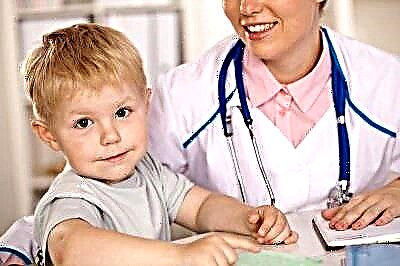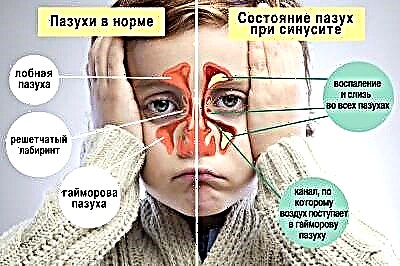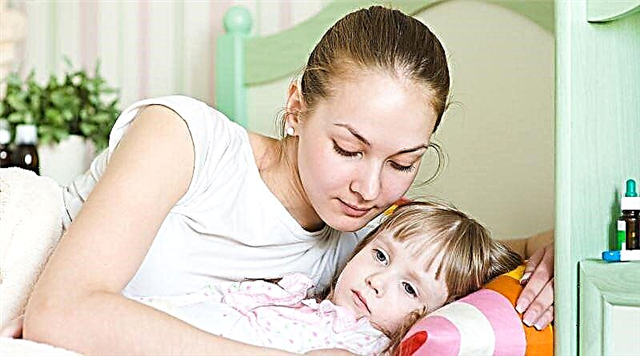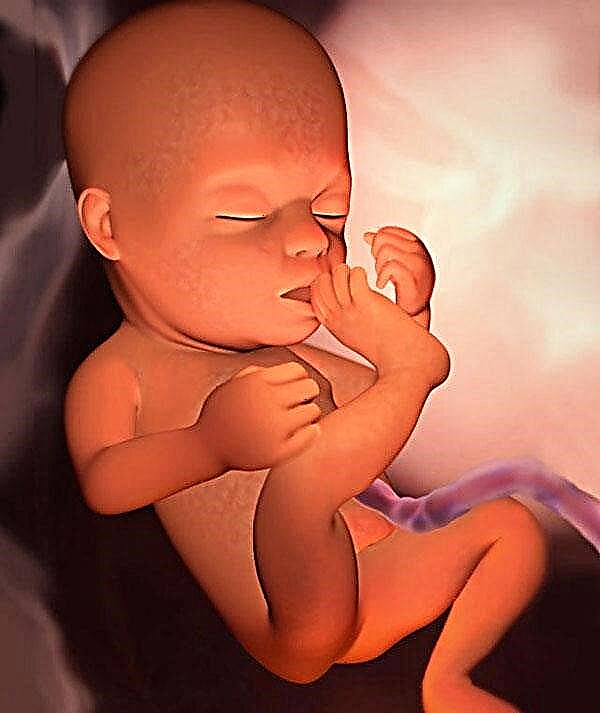
Children's sinusitis (inflammation of the maxillary paranasal "maxillary" sinuses) has a distinctive feature from an adult.
In childhood, all mucous membranes are very loose, and the nasal passages are rather narrow. Due to these physiological characteristics, the release of mucus from the child's nasal passages is difficult, and therefore, pathogenic bacteria in an ideal environment for them multiply and grow faster.
Therefore, sinusitis, if such a diagnosis is established by a doctor and confirmed by laboratory, should be treated as soon as possible. Moreover, to the question of whether antibiotics are needed for sinusitis, the answer will almost always be positive.
Why antibiotics are needed for sinusitis?
For the first 5-7 days, doctors will try to treat the child without using antibiotics, provided that you went to the clinic on time and the stage of the disease has not been started. If there is no improvement, antibiotic therapy is mandatory.

Sinusitis is unpleasant and painful for the child in itself, but the disease itself is not so terrible as its possible complications. And this list contains very dangerous and difficult diagnoses:
- Otitis;
- Pneumonia;
- Meningitis and other brain infections;
- Phlegmon;
- Sepsis.
It is necessary to treat sinusitis at the earliest stage.
Causes and causative agents of the disease
As a rule, sinusitis is already a complication that a child has after a flu, a prolonged runny nose, a cold. Inflammation of the maxillary sinuses (with sinusitis), the frontal sinus (with frontal sinusitis), or two or more sinuses (with sinusitis) are usually caused by Staphylococcus aureus, Pseudomonas aeruginosa, group A streptococcus hemophilus influenzae, and the aerobic bacterium moraxella.

Viral or allergic sinusitis cannot be treated with antibiotics, since an antibiotic cannot destroy the envelope of the virus, it is created to destroy bacteria.
But this is usually not required, because in 90% of cases of viral sinusitis, the disease goes away on its own with moderate treatment with antiviral drugs.
Indications
Symptoms of sinusitis are difficult to confuse with other diseases of the ENT organs. It is characterized by pressing pain in the forehead, "bursting" of the wings of the nose against the background of constant congestion, discharge of purulent fragments in the mucus from the nose, tearing and fear of bright light. The body temperature may rise to 37.5-38.0 degrees.
The doctor's suspicions of sinusitis (frontal sinusitis, sinusitis) should be confirmed or refuted by an X-ray of the sinuses and bacterial inoculation of mucus and from the nose.
About what symptoms are, how to treat sinusitis, you can see in this video of the Komarovsky school.
Types of antibiotics for sinusitis
At the very initial stage of the disease, it is customary to prescribe penicillin antibiotics. They affect the body "softer" than others and cause fewer side effects:
- "Amoxiclav";
- "Ampicillin";
- "Amoxicillin".
If the penicillins did not cope, and the child could not be cured, or the young patient was not so long ago treated with antibiotics of this group, the doctor will prescribe antibiotics - macrolides:
- Roxithromycin;
- Clarithromycin;
- "Azithromycin";
- Sumamed.
If macrolides also did not have the proper effect, or the child already has a rather advanced stage of sinusitis, the doctor will prescribe a medicine from the cephalosporin family of antibiotics. The child will have to take more "serious", but more effective drugs:
- Ceftriaxone;
- Cefuroxime;
- "Zedex".
And very rarely, in the treatment of childhood sinusitis, doctors try to use antibiotics of the fluoroquinolone family. These are not children's antibiotics, but sometimes they are still prescribed to children after 5 years to treat severe sinusitis caused by Pseudomonas aeruginosa:
- "Ciprofloxacin" ("Cifran");
- Lomefloxacin.


All of the above is appropriate for situations where the child has acute forms of sinusitis. In a chronic disease, the use of antibiotics raises considerable doubts among scientists and doctors - after all, it may happen that all antibacterial drugs will be tried, and there will be nothing to treat the next exacerbation of sinusitis.
Drops and sprays for treatment
Local antibiotic therapy in the treatment of sinusitis in children is considered the most optimal solution.
After all, using the medicine through the nose in the form of drops or spray, we significantly reduce the risk of such unpleasant consequences of taking antibiotics as dysbiosis, thrush, allergic reactions. This is definitely better for a growing organism. In addition, an antibiotic delivered "as intended" to the site of inflammation has a faster therapeutic effect.
If the airway is open, then there will be no problems with the use of drops and sprays. If closed, the doctor may suggest making a "puncture" and then prescribing local antibiotics.
The most popular topical antibiotics are:
- Isofra. A potent drug with the antibiotic "Framycetin" is usually recommended for children over one and a half years old. However, in some cases, "Isofra" can be prescribed for younger children. An antibiotic is sold in the form of a spray in 15 ml vials. Also, the drug is available in nasal drops. Doctors emphasize that "Isofra" can treat sinusitis, sinusitis, provided that the nasal septum is not damaged.
- "Polydexa". This spray has both anti-inflammatory and bacterial effects. Antibiotics in the composition - "Neomycin" and "Polymyxin". It comes in the form of ear drops and nasal spray. Recommended for children from 2.5 years old.
- Bioparox is an aerosol that improves the condition of the nasal mucosa. The antibiotic in the composition - "Fusafungin", the drug is prescribed for children aged 2.5 years. On sale "Bioparox" is available in 20 ml bottles. The drug has a significant list of contraindications for use.
Most drip forms of antibiotics and antibacterial sprays are contraindicated in children under 2-3 years old. But in infancy, sinusitis is very rare, since the final formation of the sinuses in children is completed only by the age of 4. Children aged 7-10 years are most susceptible to sinusitis.
Complex drops
"Complicated drops" in the nose were the only effective way to defeat sinusitis when my eldest son, at the age of 12, was undergoing treatment. After the tried and tested "fashionable" and rather expensive sprays, even after a course of antibiotics intramuscularly, he did not significantly improve. And it was the “difficult drops” that helped us to recover.
"Compound drops" is a drug that consists of several other drugs at once in the form of drops. The names, proportions and the exact composition are prescribed by the doctor, and the drops themselves are made by pharmacists in a pharmacy that has its own prescription department.
Usually, the doctor resorts to "difficult drops" when sinusitis is protracted, recovery does not occur even after a course of therapy, or in a severe form of the disease.
Antibiotics are often used in compound drops. You can usually store such drops for a short time - about five to seven days.
Before using drops or spray, it is imperative to rinse the sinuses of the nose. For this, a saline solution (1 cup of boiled chilled water per 1 teaspoon of salt), soda solution or sea water, a solution of furacilin or a weak solution of potassium permanganate is suitable. At home, rinsing can be easily done with a rubber pharmacy pear. You can also flush the sinuses with a syringe, from which you first remove the needle. Pharmacies now sell special devices for rinsing the nose.
After washing, it is advisable to rest a little and drip vasoconstrictor drugs if there is a feeling of stuffiness (i.e. swelling in the nose). After a few minutes, it will be possible to breathe, and then you can already bury drops and spray with a spray with antibiotics.
Antibiotics for inhalation in the treatment of sinusitis:
- "Dioxidin". In nebulizers "Dioxidin" is used in the form of a special solution for inhalation. Such procedures can be carried out for children who have reached the age of two. For children from 2 to 6 years old, inhalation should last 1 minute. Children from 6 to 12 years old - no more than two minutes.
- Ceftriaxone. In nebulizers, a dry mixture intended for injection is used. 1 ml bottle of medicine + 5 ml of saline. The duration of inhalation for a child with sinusitis is no more than 4-5 minutes.
- "Streptomycin". Inhalation with this antibiotic for sinusitis, experts do not advise children under 1 year old. The duration of the procedure is no more than 3-4 minutes.
The time of inhalation sessions and the duration of the course are determined by the doctor.
Treatment features
- This can be done both in a hospital and at home. Severe forms of the disease are likely to require hospitalization and subsequent surgery.
- You cannot change the dosage of the drug, interrupt the course of treatment even after a visible improvement in the child's condition. Untreated sinusitis with a high degree of probability can become chronic.

- It is strictly forbidden to warm up the nasal cavities with sinusitis. Warm compresses and a heating pad on the nose will definitely please the pathogenic bacteria that have settled in the child's sinuses. They will thank you. Any warming up with sinusitis will benefit only if there is no more pus in the sinuses, and the treatment has reached the "home stretch".
- While taking antibiotics in the treatment of sinusitis, do not forget to give the child to drink bacteriophages "Bifidumbacterin", "Bifiform", etc. for the prevention of dysbacteriosis.



